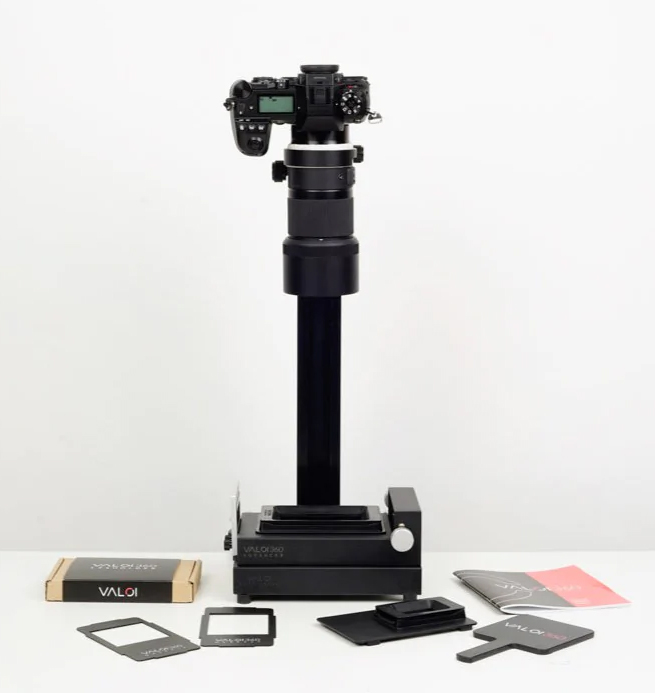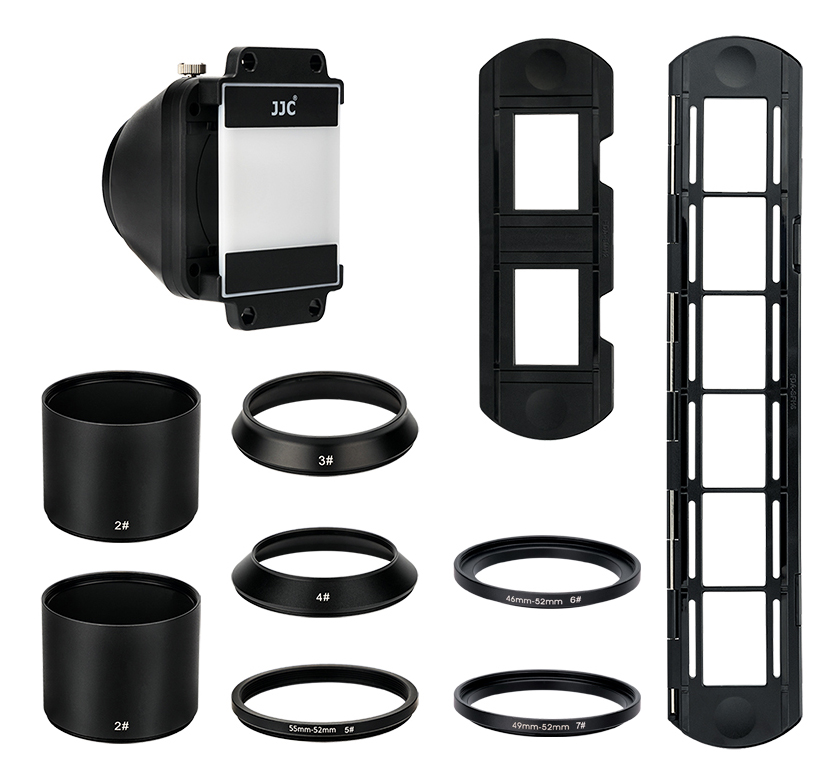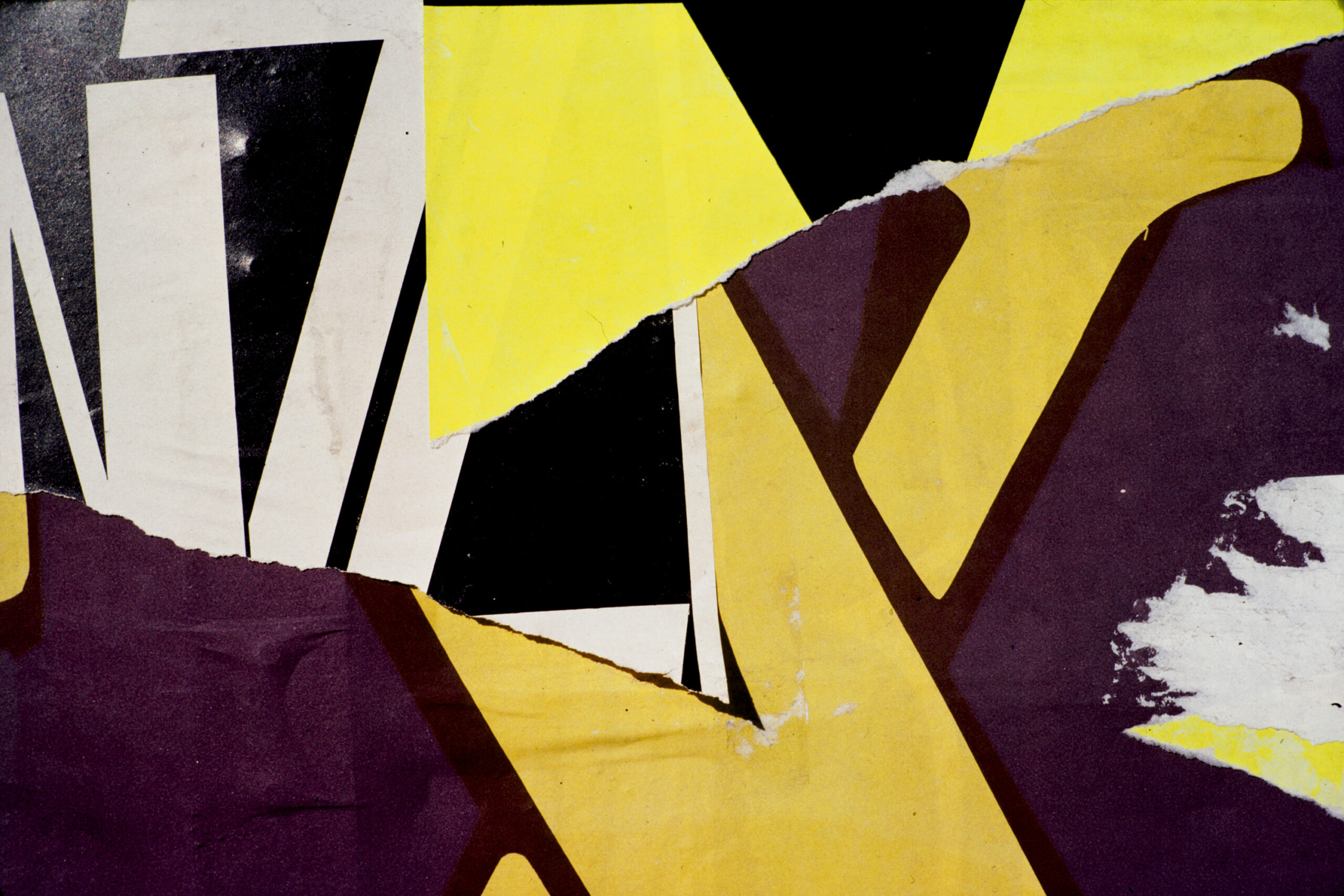It’s been two years since I posted my three-part series on the different options for turning film originals into digital files. In that time I have digitised thousands of images from my archive (slides and negatives), a friend’s B&W archive, plus the latest B&W films I’ve been shooting. During that time I also updated the film holders and systems I use.
The bulk of the negative “scanning” was done during the Covid lockdown with the Essential Film Holder (EFH) mounted over a Raleno PLV-S116 LED light panel. It is meant to be a video light, but is the perfect size to hold the EFH. It also has adjustable brightness and colour temperature (3200K – 5600K) controls, plus a CRI >95. Although it is battery powered, it has a USB-C charging port so it can be run off the mains for long scanning sessions. I recommend using it at 100% brightness at 5600K, with the white balance on your camera set to 5600K, or daylight if the camera doesn’t offer custom Kelvin settings. Of course, shoot RAW files to make any further adjustments. Using 100% brightness means you can stop the lens down to f/8 for optimum sharpness and depth of field, adjusting the shutter speed to get the best exposure. Shutter exposure length is not important as the camera is mounted on a copy stand or tripod, and using a cable or remote release so as not to shake the camera. Ideally, use manual focus, although autofocus will speed things up, depending on the camera and lens.
The EFH was mostly good with negatives, but on occasions, when using cut strips, especially in fours, it became tricky getting them through the device. Older films proved even more difficult and wouldn’t pass all the way through the film gate, particularly if they were slightly curved. If you want to use this very popular, and affordable, film holder, I suggest that you “scan” the films before they are cut as they pass through much easier and, obviously, you only have to feed it through once per film, which certainly speeds up the process.
During this time I backed a crowd-funding campaign for a new film holder coming out of Finland called Valoi 360 System. This system falls somewhere between the budget EFH and massively overpriced Negative Supply system. The Valoi is a modular system and I initially only invested in the 35mm film mask, to try it out. The whole system includes 35mm and 120 holders – with a range of masks for different film sizes, such as half frame,126, 645, 6×7 and 6×7, with new ones being added – and a mechanical advancer system to wind a roll of film through the film holder. Apart from the actual film holders, which are injection-moulded, non-reflective plastic, the rest of the system is made from metal. They also make a metal light holder to put the film advancer and holder onto, which holds a Raleno PLV-S116. The film holder has a S-curve in it that keeps the film flat and it comfortably accommodates 35mm negative strips as short as three frames, if you manually feeding them through. The Advancer is designed to “scan” complete rolls without risking touching the film frames, although cotton or anti-stat gloves are a good idea. A complete system, including a high-quality copy stand and the light holder with light sells for around £600 (depending on exchange rate) plus shipping. Of course, you can buy the individual bits you need and build it up as your requirements change. If you are going to do a lot of film digitising then I highly recommend the Valoi 360 System, even at its most basic. Valoi is available direct from Valoi, or from Speed Graphic in the UK, which will save you on shipping and any duties over buying it from Finland.

If you’ve read any of my previous photography posts you will have seen that I changed camera systems from Canon to Olympus/OM System last year. I kept an old 6D and macro lens for digitising, and wasn’t planning on using the Olympus for digitising because of its Micro Four Thirds sensor. Although “scanning” 645 film seemed feasible because they are the same ratio. Fast forward to a couple of weeks ago and someone I know mentioned they used their Olympus and a M.Zuiko 30mm macro with the Nikon ES-2 digitiser, a device I mentioned in a previous post. This took me full circle back to my earliest (unsuccessful) attempts at digitising slides with an old 1970s slide copier. Although the ES-2 was specifically designed for the Nikkor 60mm macro lens, the M.Zuiko 30mm has the same angle of view, it just needed a step-down ring. Having already invested in the EFH and the Valoi 360, forking out £150 for the ES-2 to do something I could already do seemed a bit excessive. However, while looking on Amazon, in their related products on the ES-2 page, was a very similar device by JJC for only £64. Given that both devices are essentially a plastic tube with a film holder at the end, the JJC seemed like a better proposition. Not only was it cheaper but also more versatile, not being (theoretically) limited to the Nikkor 60mm, and the latest version comes with adapters for other macro lenses including Canon EF 100mm macro, Canon EF-S 60mm, Nikkor Z 50mm and AF 60mm, Nikkor DX 40mm, Sony 50mm and 90mm, five macros Laowa, and the Olympus M.Zuiko 60mm. (Note: The version I bought wasn’t the very latest one and came with fewer adapters.) Although it is specifically designed for macro lenses, it can also be used with a standard lens and extension tubes or macro bellows. I haven’t tried as I have macro lenses.

There was no mention of the Olympus M.Zuiko 30mm in the latest JJC recommendations, but with it being equivalent to a 60mm on a 35mm sensor it wasn’t a problem, it just needed a step-down ring (included with the latest version). The 30mm and 60mm Zuiko lenses have the same filter thread. Although the Olympus has a 20MP M4/3 sensor, its “pro” cameras have a sensor-shift, high-resolution mode, which, on the EM-5iii and EM-1ii produces up to 50MP files, and with the EM-1iii, EM-1X and the new OM-1 produce files of 50MP and 80MP. Although suitable for 645 and other 120 film formats, 80MP is way too high a resolution for 35mm, even Kodachromes, Even 50MP, allowing for cropping to the 35mm 2:3 ratio, is more than big enough, and 20-25MP is plenty. Of course, the JJC device can’t be used for 120 film, that still needs the Valoi or EFM.

The advantage, besides cost saving, of this type of film digitiser is it doesn’t need a copy stand, although using high-res mode with the Olympus is supposed to be done on a tripod. Otherwise the camera can just be hand held in front of a light source, again the Raleno is perfect for this. The light can even be laid on a desk and the camera pointed down at it. Making sure the film plane and sensor are parallel isn’t an issue, as it is with the Valoi and EFH. The copier unit comes with two film holders, one that takes two slides and the other that holds a film strip of six. The negative holder is very similar to those used in film scanners. JJC also offer a package that includes a small LED light that fits the front of the digitiser for £78. JJC also make a simple, mains-powered LED light for £28 that comes with a slide and negative holder. It is a cheap alternative that can be used without the digitising adapter, but getting good, consistent results could be a bit hit and miss compared to using the camera mounted adapter. You could possibly even use it with an iPhone and an app such as FilmBox by Photomyne, although I wouldn’t recommend that route, except for quick social media posts.
If you’re new to film digitising and looking for an affordable solution for occasional 35mm film scanning with a DSLR or mirrorless camera, the JJC Film Digitizing Adapter Set could be your answer. However, if you are going to be doing a lot of digitising of different films up to 120, or have a large archive of old negs and slides, then the Valoi 360 System is probably the best in terms of build quality, functionality and price. With more and more people returning to shooting film we are bound to see more options in the future, but for the time being I recommend either (or both) of these two options, depending on your needs.